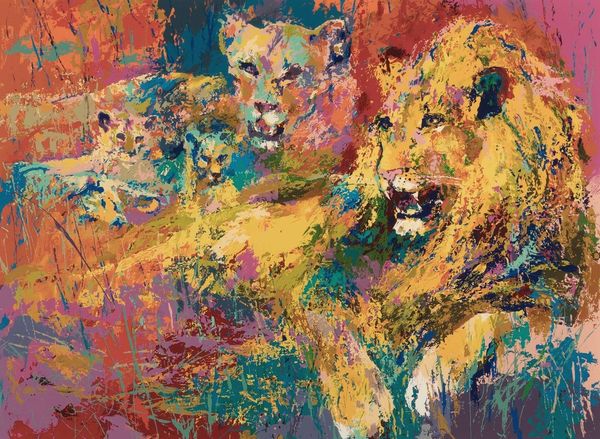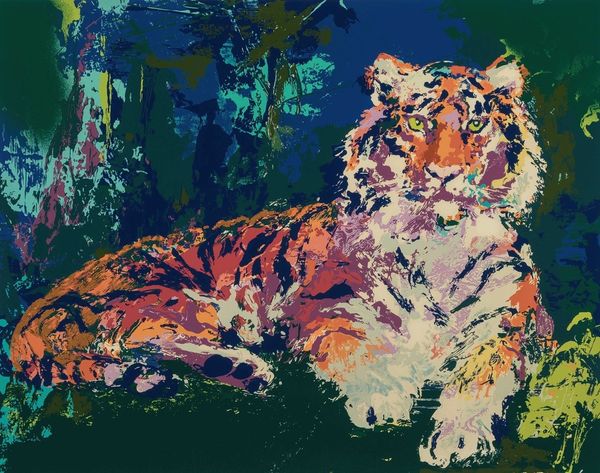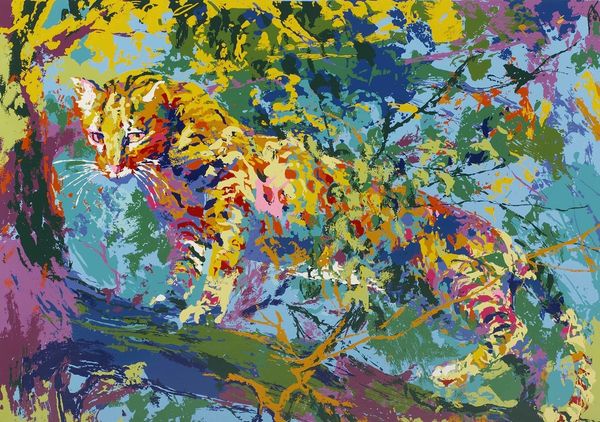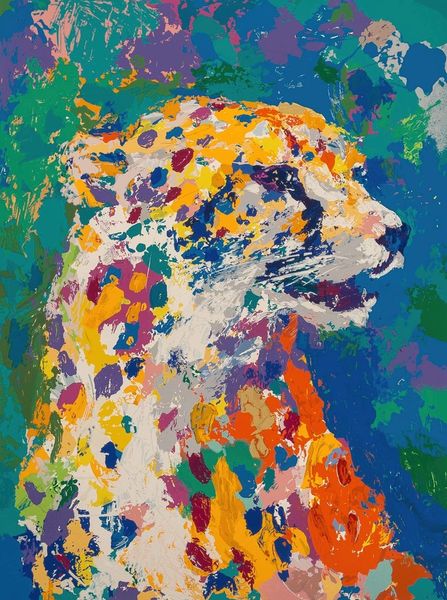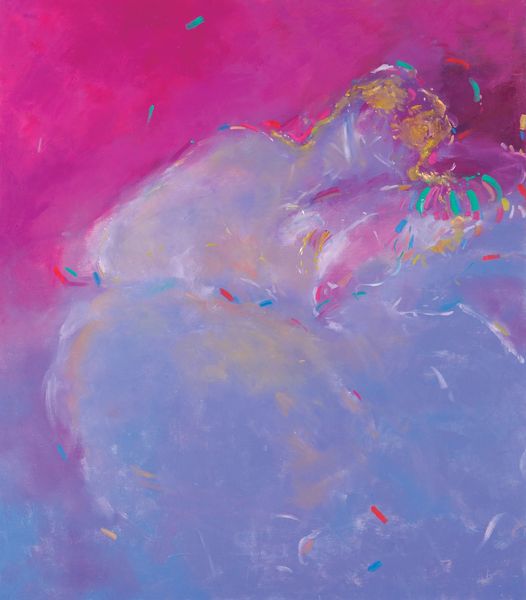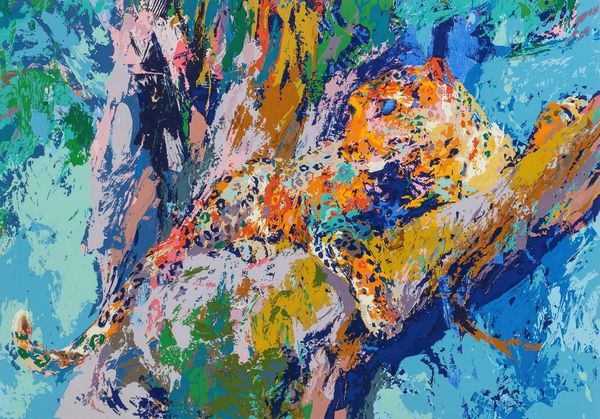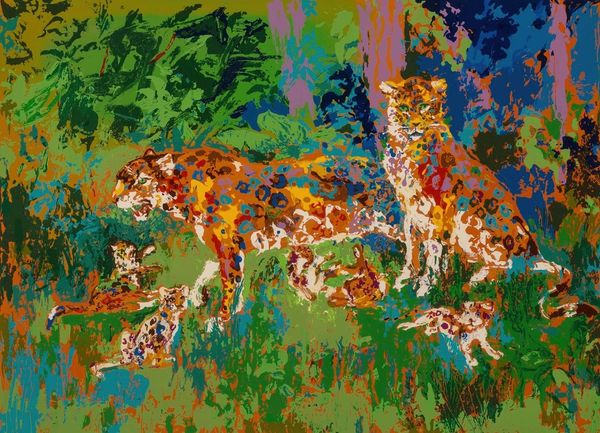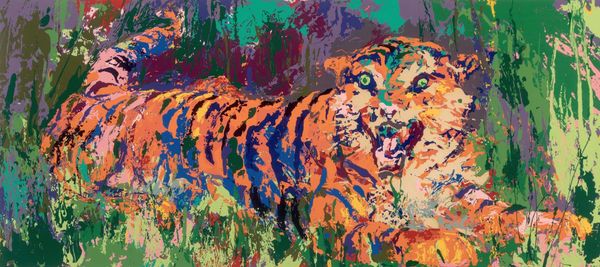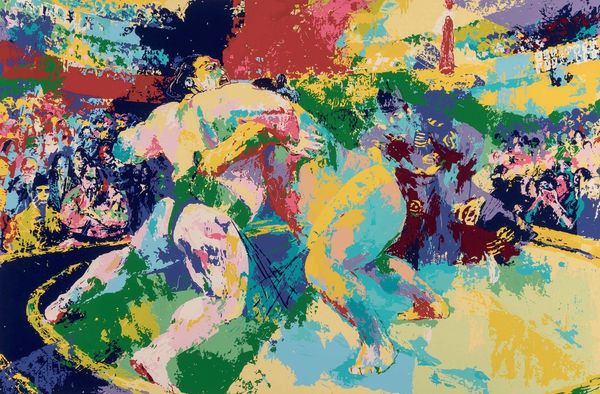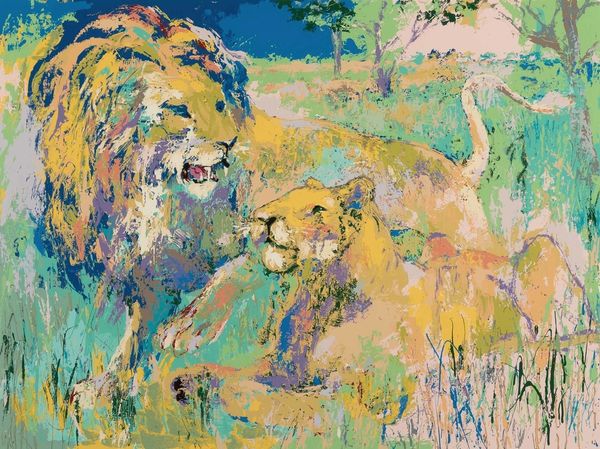
Copyright: Modern Artists: Artvee
Curator: LeRoy Neiman's "Cougar," an acrylic on canvas created in 1991. What strikes you first about it? Editor: The sheer boldness of the color palette. That saturated fuchsia against the deep indigo night sky—it's almost jarring. A deliberate choice to push against a naturalistic rendering. Curator: Precisely! And that's quite characteristic of Neiman's style. He often employed vibrant, almost fauvist, colors to capture not just the likeness of his subjects but also the energy and the essence of a moment. This cougar isn’t simply resting; it exudes a confident, almost regal, presence. How does it sit within art history, specifically regarding representations of wild animals? Editor: Historically, portrayals of animals, particularly predators like cougars, served as symbols of power, virility, or even danger, often linked to imperial power. But here, while the animal undeniably embodies strength, I see something more akin to a celebration of wildness, unfettered by human intervention. Its gaze doesn’t feel threatening. Does it make us complicit or aware as humans engaging with that ‘wildness?’ Curator: Interesting perspective. The lack of direct engagement allows for critical questions. Neiman was creating this work at a time when conservation efforts were gaining increasing visibility. Perhaps the composition challenges the viewer to think about human responsibility in this animal’s survival—given its presence at that date and time, and against a moon that could be understood as its luminary. Editor: Yes, and the fact that he rendered it in such an expressive, almost abstracted style moves it beyond simple documentation. It encourages a connection based on emotion and feeling. It feels expressionist in its vibrant depiction. The brushstrokes themselves seem to ripple with an inner life, almost mirroring the cougar's vitality. Curator: Looking at this artwork through the lens of conservation, we might consider how Neiman’s art became incredibly popular and was used in many public spaces – in this instance his presentation of powerful fauna. Editor: Yes, stepping away, it makes me think about the intersection between the wild and domesticated spaces, and how that narrative of this animal would have played out for a wide audience. I have more questions to explore and it feels the role this piece has taken, especially on those socio-political grounds, it allows further, necessary discussions.
Comments
No comments
Be the first to comment and join the conversation on the ultimate creative platform.
